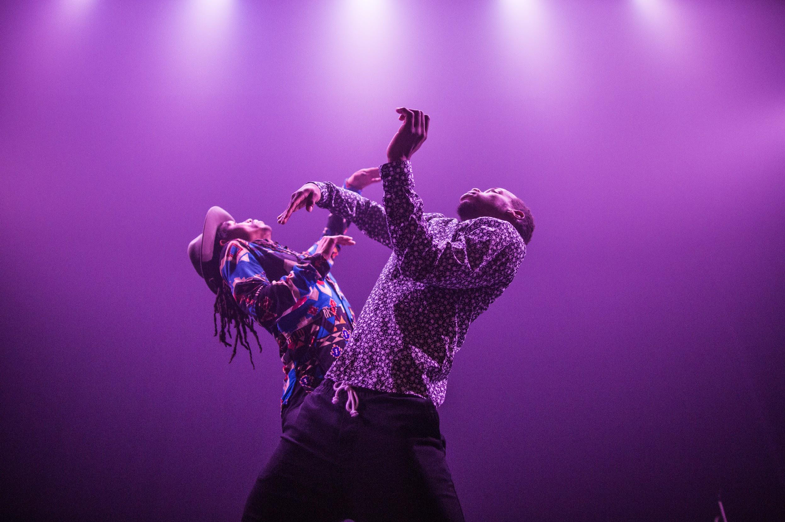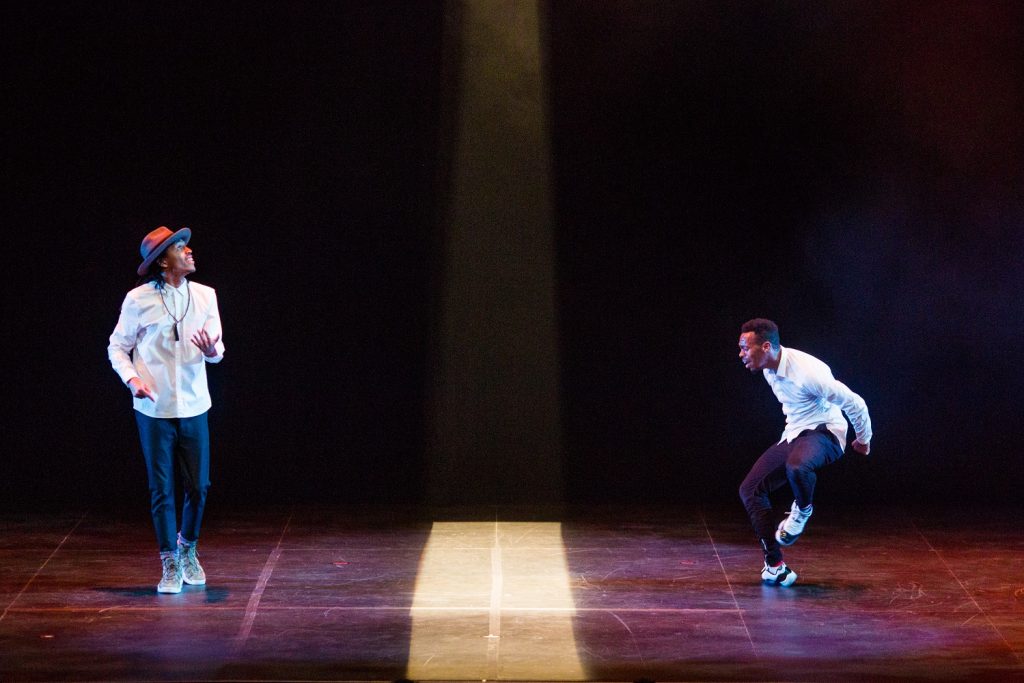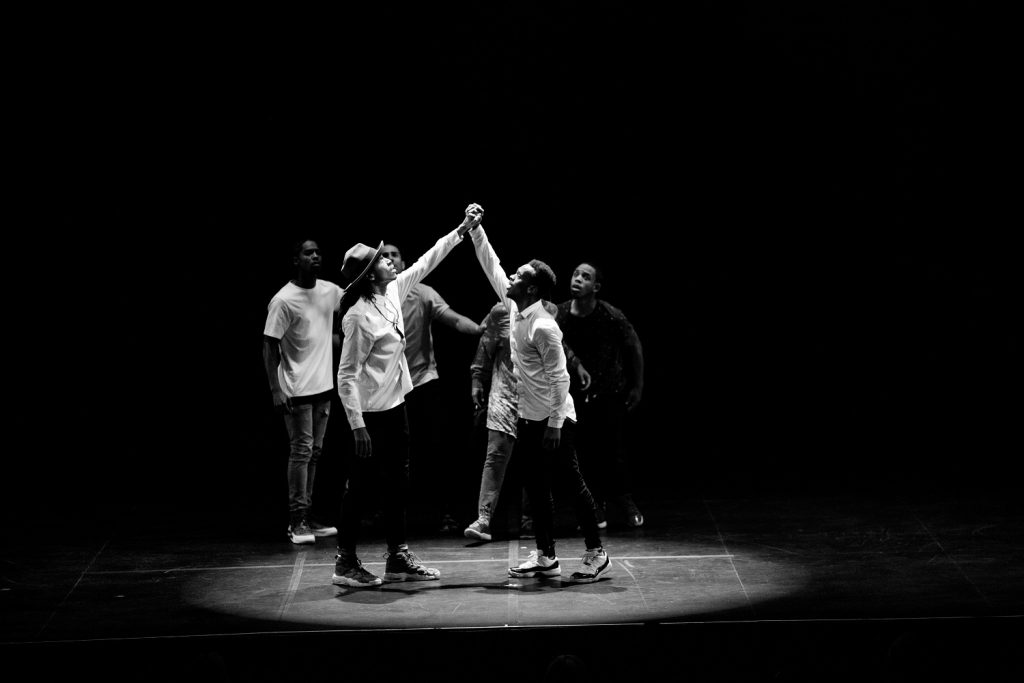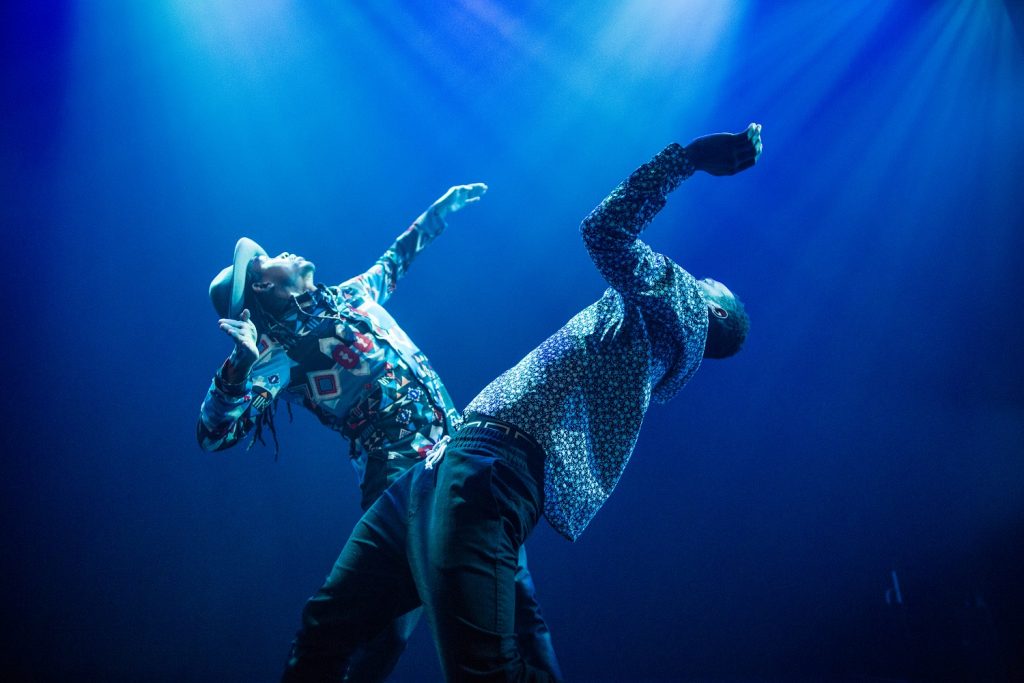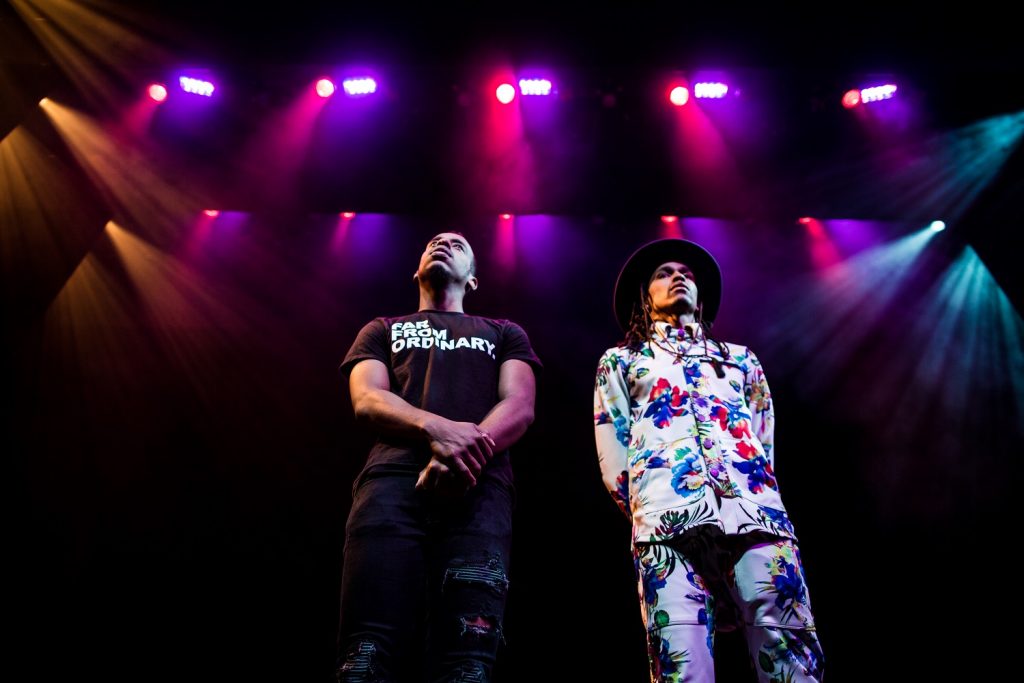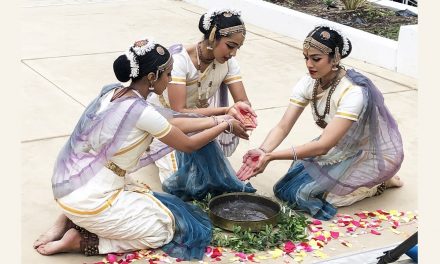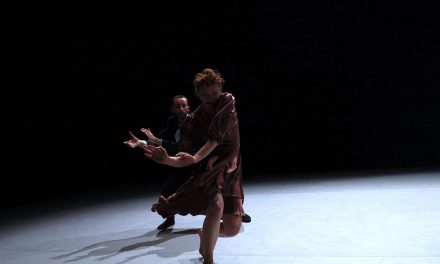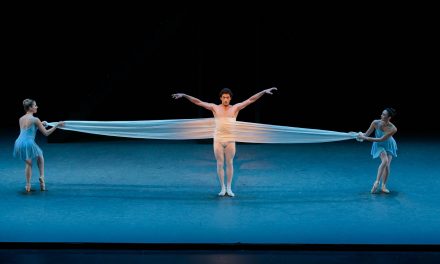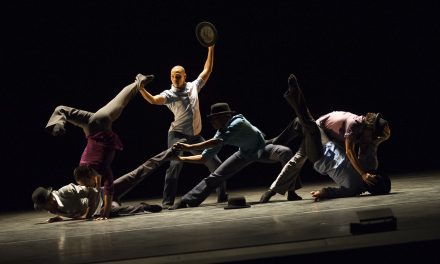“Love heals all wounds.” The words, spoken repeatedly by Jon Boogz, Lil Buck, and their MOVEMENT ART IS (M.A.I.) crew echoed within UCLA’s Royce Hall on May 23, touching the audience with its positive message of activism through art. Named after the phrase, the show was a syncretic symphony of several mediums, including spoken word, digital projections, and live music, connected through hip -hop dance. Inspiring, appropriately righteous, and sentimental, the material made a lasting effect in its brief 65-minute run and established the already popular Boogz and Buck, along with the rest of M.A.I., as artists to watch in the future.
The first segment opened with the two headliners making their way onto the stage, lying on their back and stargazing at a vivid, CGI projection of outer space before being joined by violinist extraordinaire Jason Yang, and resonant spoken word artist Robin Sanders. Yang’s soothing strings overlapped a base of beats by Chizzy, DBR, Wondagurl, Parker & Marshall Mulherin, and Izzy Beatz, enveloping the scene, as well as the entire production. The opening lines became the narrative thread that wove together the evening’s story—a desire for a better and more just world for African Americans. Though the theme has been done before, the piece took on a deeper significance because it was performed by an expectant mother. Sanders, who was visibly pregnant, poured a stronger and more tender, authentic passion into her written poetry, feeling every word as she spoke it to life.
The rhythm of her words combined with Yang’s original music to create a welcome melody for M.A.I.’s movement. Dressed in bright, ’90s costumes, Marcus Battle, Nao Campbell, Reimy Jones, Trent Mendoza, Ron Myles, Alexa Nof, and Quentin Robinson formed several shifting groups that anthropomorphically represented elements such as water and fire. Together, their work ignited an environmentalist theme, which Sanders introduced through social commentary that linked events such as the Flint water crisis in Michigan to classicism stemmed from racism and corruption.
The projections worked best when they were simple and provided a blueprint along which the dancers could mold and model their bodies, aligning them with the images before bringing them to life in their own way. Arm waves became gentle water ripples, or during a brief segment about wildfires, hungry flames. Synchronized vibrations represented angrier, more destructive natural phenomena such as thunder and lightning. Standouts included Olga Sokolova, whose mixed ballet and contemporary dance movements with her hip-hop to make spiraling windstorms and cyclones, which she symbolized through twirls and acrobatic leg rotations.
At times it seemed as though the piece was trying to take on too much. Its delve into environmental politics, though poignant, went on for a little too long, briefly losing the point of the works’ race-centered themes.
The rest of the show brought the focus back to color and ethnicity, starting with a welcoming cypher of M.A.I.’s young Black men b-boying and cheering each other on as they happily spoke about creating a brighter future. Their sentiments centered on defying the stereotypes society thrusts upon them about being involved in gangs, and their improvised style of movement expressed their positive thinking through broad shoulder stances and big smile
“This world is yours,” Sanders constantly interjected throughout their rhymes. Its significance brought on a friendly scope to what is often a justifiably negative and tragic topic. This was soon interrupted however with reenactments of violent police shootings, which was made particularly tragic thanks to Sanders. Her words reflected a level of genuine fear and anger one could only express when realistically concerned for their own unborn child.
Some of the most captivating imagery came by way of a scene in which the group began building and tearing down walls. They used robotic movements to simulate laying down bricks, all while mocking Trump and his policies to “make America great again” without calling him out by name. This concept became the crux of the show, with the walls being the main culprit behind society’s inability to coexist and properly improve. The greatest satisfaction then came with an expanded scene of the group trying their best to tear down the wall they themselves had built, before finally pushing through in a well-choreographed slow motion scene, after which they freeze framed their unique expressions of relief and victory before coming together as one.
The dancers’ individuality was never lost within the scene. Each contributed to its conception with a wide and varied scope of reactions later echoed in a very personal section during which they each told their own stories and general reasons for having joined M.A.I. Rather than coming across as propaganda for the organization, the information was seamlessly incorporated into the finale, enhancing the essential point behind the creation of the show. Furthermore, the intimate information they shared helped solidify their evolutionary journey from inanimate objects to human beings during the course of the evening.
Throughout the night, Boogz and Buck humbly allowed the other members of M.A.I. to shine throughout the evening’s performances. Rather than inserting themselves into every scene and dominating the dance. When they did feature however, their smooth movements were absolute showstoppers. Boogz’s popping was hip-hop at its finest, with a modern twist that never lost its classic street flair. Buck’s Memphis jookin—a style of gangsta walk performed to ’90s Buck music, which is based on heavy snare drums and brassy beats—took over the stage every time the dancer began wobbling his legs and dragging his feet shifting across half the stage on his tip-toes. His moves were so swift, his sneakers only squeaked twice throughout the entire process.
Both parties executed their parts in near silence, visually stunning the crowd with their abilities. Boogz however did far more dancing than Buck, whose light felt dim in this production. It was a shame considering he is considered among the best in his category of dance and performed beautifully every time he participated. There were quite a few scenes, particularly in the second half, where the two teamed up to play oppressed characters. Buck often shrunk in these moments, his role condensed to more of a victim, while Boogz rebounded from his downtrodden position, displaying a stronger, fighting spirit with his steps.
“Love Heals All Wounds” ended on a bittersweet note, which reiterated its message, without letting the viewer forget how desperately we need more love and positivity to move forward from the current state of our country. Although some of the images were slightly redundant and reminiscent of ones created in other activism-based shows, society may need repetition to get the message straight. Their translation of these unfortunate events, and their insistence on remembering unresolved tragedies such as Flint form an altogether new show that flourishes on M.A.I.’s multi-faceted talents.
For more information on MOVEMENT ART IS, Click here.
To access CAP UCLA’s performance calendar, click here.
Featured image: “Love Heals All Wounds” – Jon Boogz, Lil Buck – Photo by Ney Coelho

